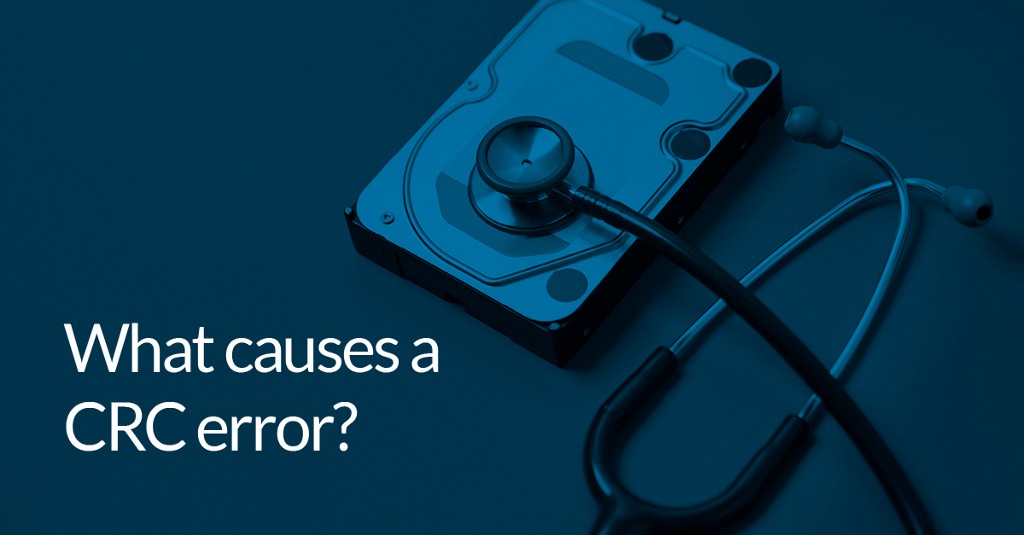What causes a CRC error?


Typically a CRC error is reported when performing an image backup, or when performing a chkdsk surface scan.
Hard drives are extraordinary devices rapidly returning vast quantities of uncorrupted data while relying on quantum magnetic effects to interrogate the magnetic state of vanishingly tiny areas of magnetic surface. It also requires great mechanical precision to locate the read head. All this is achieved in an environment exposed to vibration and varying temperatures.
Errors are a natural consequence and the design of a modern disk accounts for this with error correction, retries and remapping to reduce the uncorrected bit error rate around 1014 or higher for enterprise disks. Note, this error rate rises rapidly for failing disks.
Disks are segmented into blocks of data typically called ‘sectors’. Data can only be read or written as a sequence of complete sectors. Each sector consists of the data itself plus additional data to aid with location, error detection and error correction.
Error correction uses a mathematical technique to add a measure of redundancy to the data during writing enabling both the detection and correction of a limited number of bit errors during a subsequent read. The disk firmware silently corrects detected errors when a read is requested by the operating system. In the case of repeated errors, the disk firmware will move (or remap) the sector to a different area of the disk reserved for this use.
This correction and remapping is normally invisible to the operating system*. However, when there are too many bit errors in a sector to correct, the disk reports a CRC error back to the operating system. The name CRC error is slightly misleading; the event is actually an uncorrectable error event.
CRC errors are rare and by default causes a Reflect backup or clone to abort as it indicates that the data in the backup has a known error. However, in many cases, as long as the error rate is low and doesn’t cause corruption to critical filesystem metadata, the backup will still be fine. There is an option to continue on errors.
In daily operation, only a tiny portion of the data on a disk is read. An image backup, by definition reads the all the data stored on a disk and typically is the first time that the errors are revealed. For this reason, CRC errors are often, incorrectly, attributed to the operation of a Reflect backup.
To finally answer the question raised by the title: It is not good news but data loss may be minimal, at least in the short term. CRC errors, especially if the number is significant and increasing, are a sign of a failing disk. Follow the instructions in the linked KB to backup a disk with bad sectors and then consider arranging a replacement. As always, double check that your backups are in good shape.
Note: Though magnetic disks are the primary target of the article, the concepts equally apply to SSDs with the caveat that an atom of SSD storage is called a page and pages ‘wear’, only being capable of a finite number of erase cycles. In this case the number of reserved pages is key to the ultimate lifetime of the device. When there are no reserved pages remaining, the SSD switches to read only operation.
*The number of raw (soft) error events, retry reallocation events can be read via the SMART mechanism.
Links:
https://knowledgebase.macrium.com/display/KNOW72/Imaging+disks+with+bad+sectors
https://en.wikipedia.org/wiki/Bad_sector
https://en.wikipedia.org/wiki/S.M.A.R.T.
https://blogs.msdn.microsoft.com/oldnewthing/20130711-00/?p=3833


